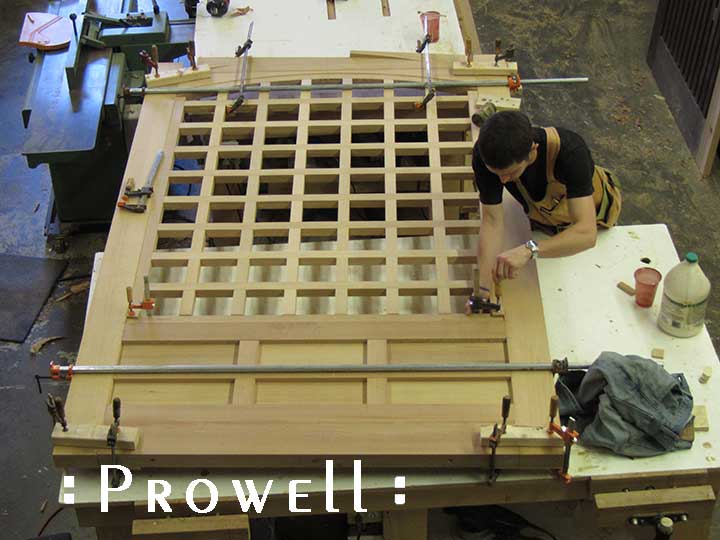Specifications for Exterior Woodworking Joint #10
#10
FLOATING TENON W/DOWEL LOCKING PINS
Joint #10 utilizes a locking key somewhat simpler than the tenon keys of Joint #9. By increasing the tenon size itself to 1″ thickness, we can bore a 3/8″ diameter hole through the top of the stile and rail, on through the width of the tenon, and into the stock. A joint we’ll turn to on large gates of 2-1/4″ thickness extending in the 5′-6′ width range.
Click Here, or on the sketch for hi-res PDF.
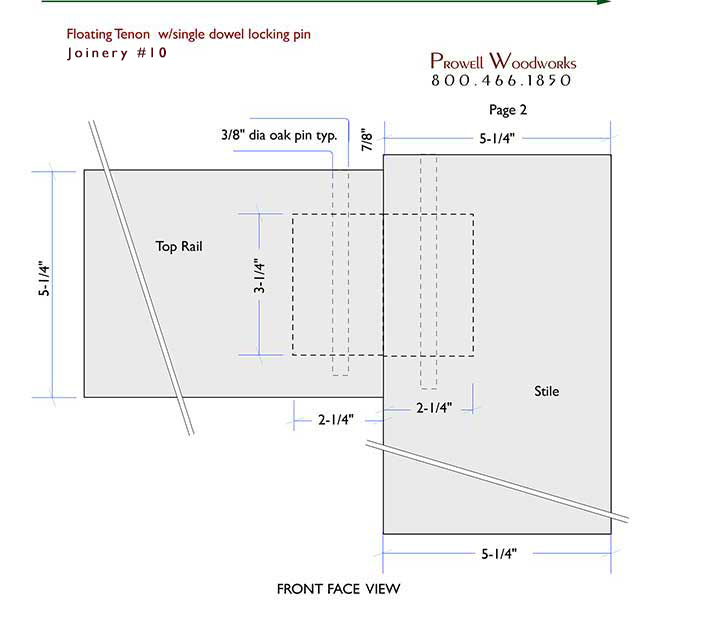
JOINERY #10
Using a layout template, the bores for the dowel keys are easily managed. The purpose of the template is simply to insure the bores are straight, centered through the thickness of the tenon.
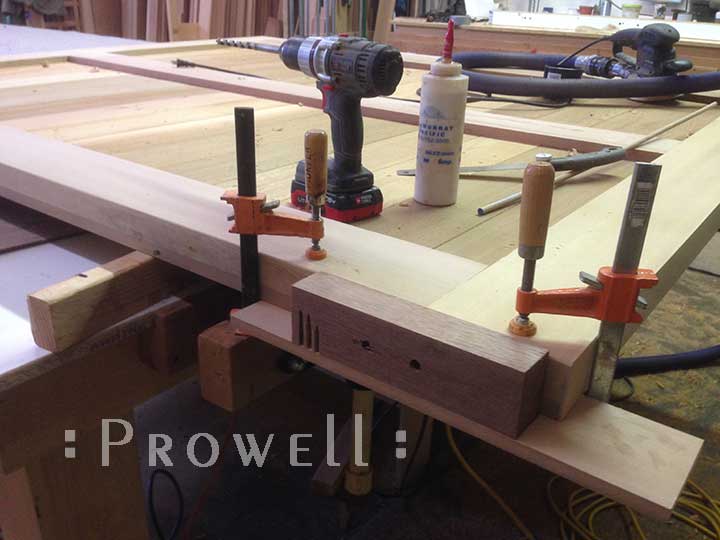
JOINERY #10
The pins must extend all the way through the tenons and into the stock for the full strength of this joint.
Although the locking key tenons of joint #10 extend only partially into the tenon, #10 joint also employs a full thru tenon with wedges for the added support.
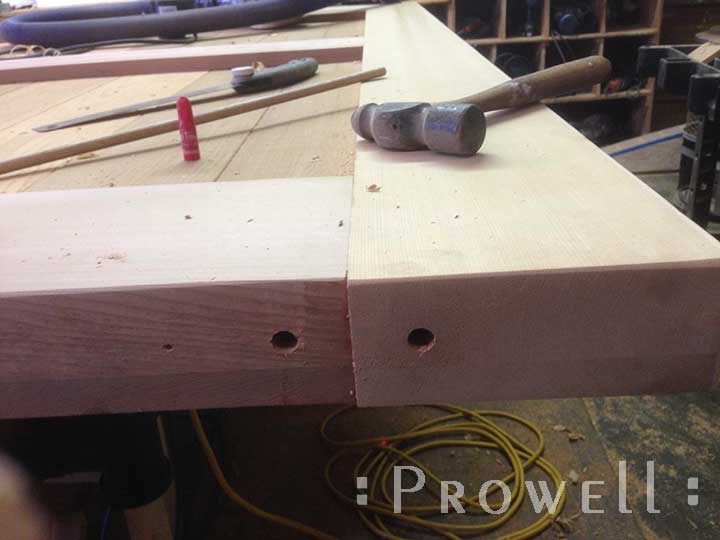
JOINERY #10
The pins must be of an appropriate species and with sufficient density, such as oak or teak. Common maple or birch dowels are not resistant to moisture and will decay in the more humid climates.
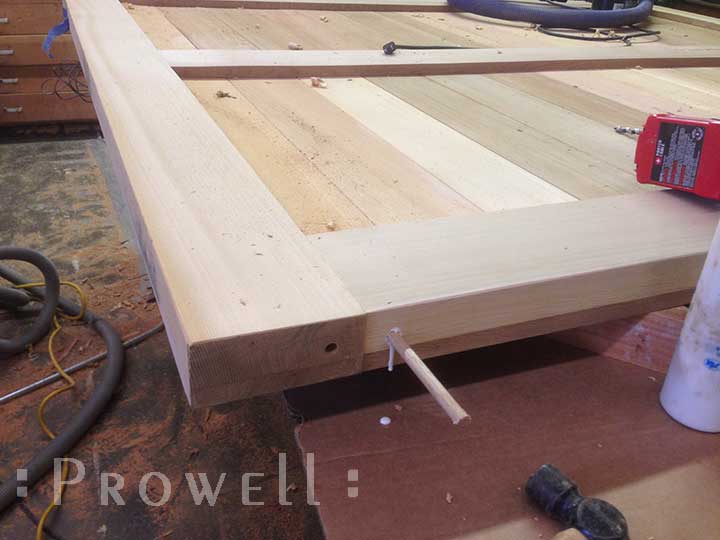
JOINERY #10
Sanded flush. The pins are essentially hidden from view, located on the bottom of the gates and the top, which is commonly at a height beyond the normal sight-line.
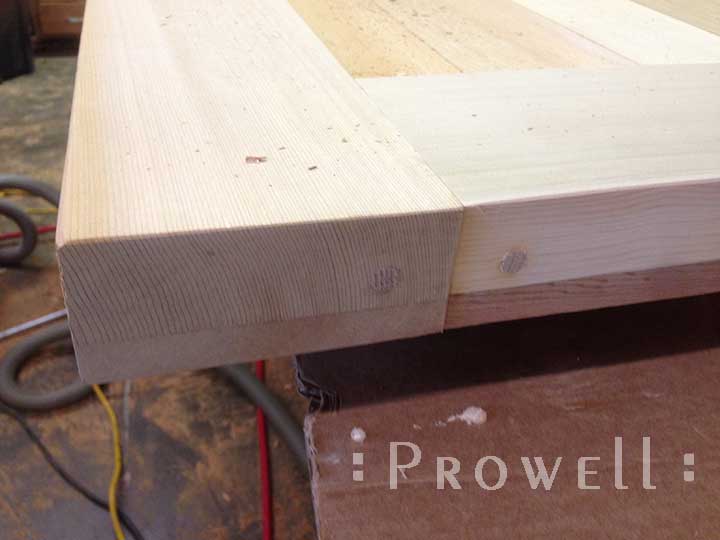
JOINERY #10
The 1″-thick tenon is eased with a round over bit to correspond the radius of the mortise.
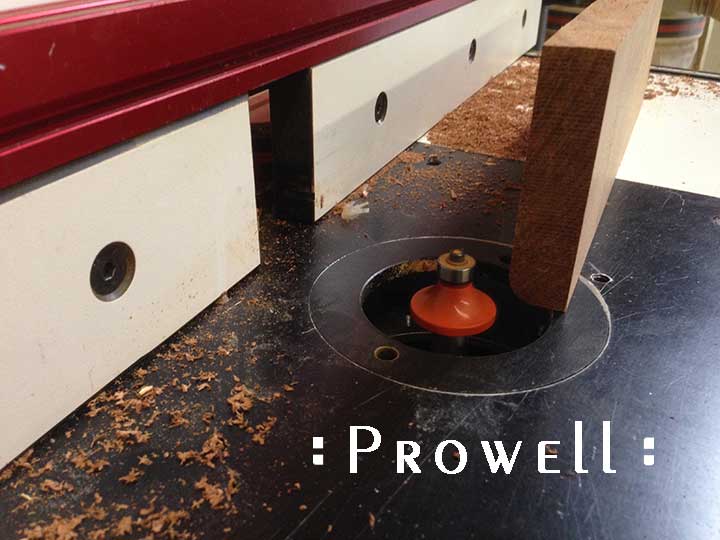
JOINERY #10
Ben with an example where we utilized Joint #10. Our gate style #77-A.
